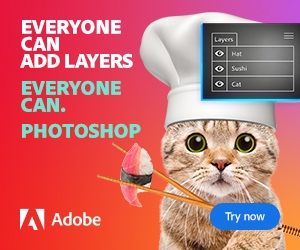Video editing has come a long way from its humble beginnings. What once required heavy machinery, complex equipment, and hours of labor-intensive processes is now accessible to anyone with a computer and the right software. As technology has advanced, so too have the techniques and tools that allow editors to turn raw footage into polished, engaging videos. But where did it all start, and how did we get to the sophisticated editing tools we use today?
In this article, we will take a look at the history and evolution of video editing, the rise of digital tools, and the future of this powerful craft.
The Beginnings: Analog Editing
The history of video editing dates back to the 1950s, when television and film studios began using a process known as linear editing. Early video editing was based on analog equipment, where physical tapes had to be manually cut and spliced together to create the final product.
Film Editing: Early film editing was done by physically cutting strips of film with scissors and then splicing them back together with tape. Editors would use specialized machines like the Moviola to view and cut film reels.
Magnetic Tape: In the 1960s and 1970s, magnetic tape recording became common. Editors would cut and splice magnetic tapes, which were more flexible than film strips. These machines were often bulky and expensive, requiring specialized knowledge to operate.
The analog process was slow, costly, and required a lot of manual labor. However, it was the foundation of modern video editing. This process laid the groundwork for the creative decisions that editors would eventually make once video editing transitioned into the digital realm.
The Rise of Digital Video Editing
As technology advanced in the late 20th century, the rise of digital video editing revolutionized the industry. The introduction of personal computers and software designed for video editing made it possible for individuals and small studios to edit video in ways that were previously unimaginable. Here’s how digital video editing evolved:
1. The Birth of Non-Linear Editing (NLE)
In the 1990s, digital video editing saw a major breakthrough with the development of Non-Linear Editing (NLE) systems. Unlike traditional linear editing, where editors had to go through footage in sequence, NLE systems allowed editors to access any part of the footage at any time, without having to work through the timeline from start to finish.
Avid Media Composer: One of the first NLE systems, Avid Media Composer, became a major player in the film and television industry in the 1990s. It allowed for much more efficient and creative editing, making it a staple in professional video production.
Final Cut Pro: Apple’s Final Cut Pro, released in the late 1990s, brought NLE to a broader audience, making it accessible to independent filmmakers and smaller production studios.
NLE systems transformed the editing process, enabling editors to experiment more freely with shots, cut sequences, and effects. With the advent of these systems, editing became more creative and less bound by the limitations of physical film or magnetic tape.
2. The Proliferation of Video Editing Software
In the early 2000s, more and more video editing software became available to the general public, giving rise to a democratization of the craft. Software such as Adobe Premiere Pro and Sony Vegas brought powerful editing tools to the desktop, making it easier for anyone to start editing videos on their personal computers.
Adobe Premiere Pro: As one of the most widely used video editing programs, Premiere Pro became a standard for both professional and amateur editors. It offered an intuitive interface and powerful editing features, such as multi-cam editing, color correction, and special effects.
Final Cut Express: Apple also made video editing more accessible with Final Cut Express, which allowed non-professional users to create high-quality videos. The popularity of Apple’s software, combined with affordable consumer-grade cameras, gave rise to a new generation of filmmakers and video content creators.
These software tools brought editing to the masses, allowing a broader audience to produce high-quality video content with relative ease.
The Current State: Sophisticated Digital Tools and Cloud-Based Solutions
Today, video editing is more sophisticated than ever before. With powerful software, affordable hardware, and the widespread availability of high-quality cameras, anyone with an idea and a computer can create professional-looking videos. Here’s a look at the tools and technologies shaping modern video editing:
1. Cloud-Based Editing and Collaborative Tools
In the past, video editing was often a solo endeavor, but today, collaboration is easier than ever. Cloud-based editing platforms such as Frame.io and WeVideo allow editors to work remotely with teams, share files quickly, and make real-time revisions.
Frame.io: This cloud-based software is used by many professionals for its seamless collaboration features. Editors can upload their work, share it with clients or team members, and receive feedback directly on the video.
WeVideo: A more accessible platform, WeVideo allows users to edit their videos in the cloud, making it easier to work from any device, anywhere.
These cloud-based tools have made it easier for teams to work together regardless of location, streamlining the editing process for both small and large productions.
2. AI and Machine Learning in Video Editing
Artificial intelligence (AI) is beginning to play a significant role in video editing, making certain tasks faster and more efficient. AI-powered tools can now assist with tasks like automated editing, color grading, and even creating captions.
Automated Editing: AI algorithms can automatically select the best clips from raw footage based on specific criteria, like audio cues or scene changes. This can speed up the editing process, especially for projects with large amounts of footage.
Color Grading: AI tools like Adobe’s Sensei can analyze footage and suggest color grading adjustments based on the style or mood of the video, saving time on manual adjustments.
AI is making video editing faster, smarter, and more efficient, freeing up editors to focus on the creative aspects of their projects.
3. Virtual Reality and 360-Degree Video Editing
Another exciting development in video editing is the rise of virtual reality (VR) and 360-degree video. Editing immersive videos requires new techniques and software tools, and these innovations are opening up new creative possibilities.
360-Degree Video: Editors can now create fully immersive videos that allow viewers to control their perspective. This kind of editing requires specialized software like Adobe Premiere Pro and Insta360, which support 360-degree footage and provide tools for stitching, color correction, and more.
As VR technology improves, it’s likely that the demand for immersive video content will continue to grow, and video editors will have to adapt to new tools and techniques to accommodate this.
The Future of Video Editing: Trends to Watch
Looking ahead, the future of video editing will likely be shaped by several key trends:
Increased Integration of AI: As AI continues to evolve, expect even more automation in the editing process. AI could handle routine tasks like syncing audio, adjusting lighting, or even choosing the best shots, allowing editors to focus on more creative decisions.
Mobile Editing: With the rise of smartphones, mobile editing is becoming more sophisticated. Apps like LumaFusion and Kinemaster allow users to edit on the go, making it easier for content creators to produce high-quality videos from anywhere.
Real-Time Editing for Live Streams: As live streaming becomes more popular, real-time editing tools are emerging. These tools allow for quick cuts, effects, and transitions during live broadcasts, adding a layer of production value to live content.
The future of video editing is undoubtedly exciting, with new technologies continually reshaping the way we create and consume video content.
Conclusion
From the early days of analog editing to the digital revolution and the rise of AI-powered tools, video editing has undergone a dramatic transformation. Today’s editors have access to a wide range of powerful software and technologies that make it easier than ever to create high-quality content.
As the industry continues to evolve, video editing will undoubtedly continue to push the boundaries of what’s possible. Whether you’re an amateur creator or a professional editor, staying informed about the latest trends and tools will help you remain at the cutting edge of this exciting and ever-changing field.


